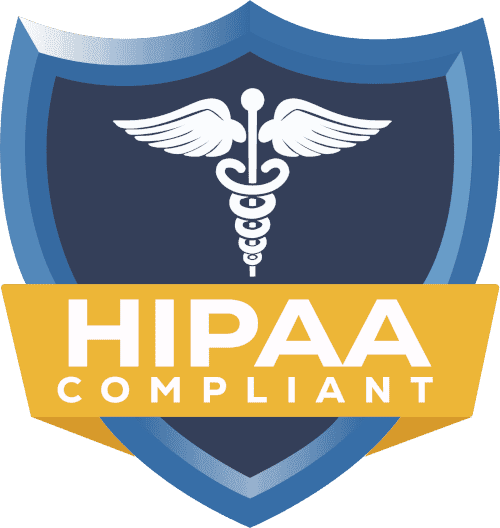What Is Credentialing in Medical Billing: Understanding the Critical Link Between Providers and Payment

Few processes in the maze of healthcare management are as vital and yet so vague as credentialing. This key admin function acts as the crucial link that joins healthcare providers with insurance payouts. Let’s explore what credentialing in medical billing involves and why it matters for healthcare practices of all sizes.
Defining Credentialing in Medical Billing
Credentialing is the whole process of checking a healthcare provider’s qualifications and registering them with insurance companies in medical billing so that they can treat patients and get paid as in-network providers. This verification helps ensure that only qualified professionals provide services to insured patients.
This process serves multiple important functions:
- Checks provider qualifications, education, and licensure
- Makes sure can receive insurance reimbursement
- Creates network status for patient access
- Makes sure all payer and regulatory requirements are met
- Patient safety is ensured by provider credential verification
Without proper credentialing, the process of medical billing becomes much more complicated, and in most cases, denied claims will lead to reduced reimbursement and unhappy patients who are stuck with higher out-of-pocket expenses.
The Relationship Between Credentialing and Medical Billing
The relationship between credentialing and billing is straightforward and consequential:
Revenue Effect
Insurance will not pay for the services rendered by a provider until he/she is properly credentialed with them:
- Denied outright
- Processed at lower out-of-network rates
- Patient billed for services
- May take longer to process
Patient Financial Experience
Patients expect their insurance to pay for services from their providers. When credentialing issues arise, patients may experience:
- Surprise out-of-pocket expenses
- Confusion about coverage
- Complicated billing
- Possible hesitation to seek necessary care
Compliance and Audit Risk
Billing for services without proper credentialing can create compliance issues such as:
- Possible false claims issues
- Vulnerability to audit
- Violation of payer contracts
- Requirement to refund payments received
The Credentialing Process for Providers: Key Steps
The health insurance credentialing process typically follows these steps:
1. Preparation and Documentation
Collecting all necessary information and documents such as
- Medical licenses & certifications
- DEA registration(if applicable)
- Professional liability insurance
- History of education and certificates of training
- Work history
- Hospital privileges
- Board certifications
- References
2. CAQH ProView Profile
Many providers start by filling out a CAQH ProView profile, which acts as a central place for credential info used by lots of insurance companies.
3. Insurance Application Submission
Apps are sent to each targeted insurance co, usually with:
- Demographic info
- Practice details
- Tax info
- Banking details for electronic payments
- Provider network selection
4. Primary Source Verification
Insurance companies check provider info directly with main sources:
- Med schools
- Residency/fellowship programs
- Licensing boards
- Certifying boards
- Past employers
5. Credentialing Committee Review.
Many payers have committees that review applications and make approval decisions based on company standards and network needs.
6. Contract Negotiation and Execution
Upon approval, contracts outlining payment rates, terms, and conditions for participation in the network are provided to the providers.
7. Final Enrollment
After contract execution, providers are enrolled in the payer’s system for claims processing typically receiving:
- Effective dates for billing
- Provider identification numbers
- Billing guidelines
How to Get Credentialed with Insurance Companies Successfully
Credentialing has to be navigated with great attention to detail and strategic planning:
Start Early
Begin the credentialing process at least 90-120 days before you plan to see patients with a particular insurance. Some payers take 120-180 days for full credentialing.
Be Thorough and Accurate
Complete all applications fully and accurately. Even minor errors or inconsistencies can cause significant delays.
Maintain Organized Documentation
Establish a credentialing file with all required documents available in digital format.
Follow Up Consistently
Regular check-ins with the insurance companies (every 2-3 weeks) helps keep the applications moving and any issues that arise addressed in a timely manner.
Consider Professional Assistance
Many practices find value in credentialing services or dedicated staff who specialize in navigating this complex process.
Understand Payer Priorities
Research which insurance companies dominate your market and prioritize applications accordingly.
Credentialing Insurance: Understanding the Payer Perspective
Credentialing serves several important functions for the insurance company:
Quality Assurance
Provider qualification verification helps ensure care competency for their members.
Network Management
Credentialing controls the size and composition of the provider network by insurers.
Risk Management
The verification process helps identify potential concerns in a provider’s history that might represent liability risks.
Regulatory Compliance
Insurers need to fulfill both state and federal mandates regarding provider verification prior to enabling them to participate in a network.
Common Challenges in the Credentialing Process
There are several common challenges during credentialing:
The normal timeframe is 90-180 days, but can become longer if there are issues with application completeness or verification.
Timeline Delays
Varying Requirements
Each insurance company has different forms of applications, documentation requirements, and processes for verification.
Communication Gaps
The insurance companies often do not give enough information about the status of an application so that follow-up has to be done persistently.
Ongoing Maintenance
Recredentialing would happen every 2-3 years so that there is continuous administrative burden.
Provider Enrollment vs. Credentialing
These are terms that are used synonymously but actually represent different parts of the process:
- Credentialing: Verification of qualifications and background
- Provider enrollment: The administrative process of registering in payer systems for claims payment
Technology Solutions in Credentialing
The technology solutions continue to take shape over the evolving landscape of credentialing and make the process effortless. These include:
- Credentialing software platforms
- Automated tracking systems
- Electronic verification services
- Integration with practice management systems
- Online application submission portals
These technologies might help cut down on paperwork and speed things up, but the basic way of handling credentials doesn’t really change much.
Conclusion
Credentialing in medical billing can be defined as the highly critical administrative function that affects not only the financial health of a healthcare practice but also its patient experience. The process may be daunting, but when recognized for its importance and approached strategically, it turns out to be less cumbersome and helps ensure optimal reimbursement.
Successful credentialing, whether done in-house or through the help of professional credentialing services, forms the backbone of effective medical billing and proper reimbursement as well as patient satisfaction regarding the financial aspects of care.
By investing adequate resources into this vital process, healthcare providers will be able to concentrate more on their primary mission of delivering quality care to patients.



















